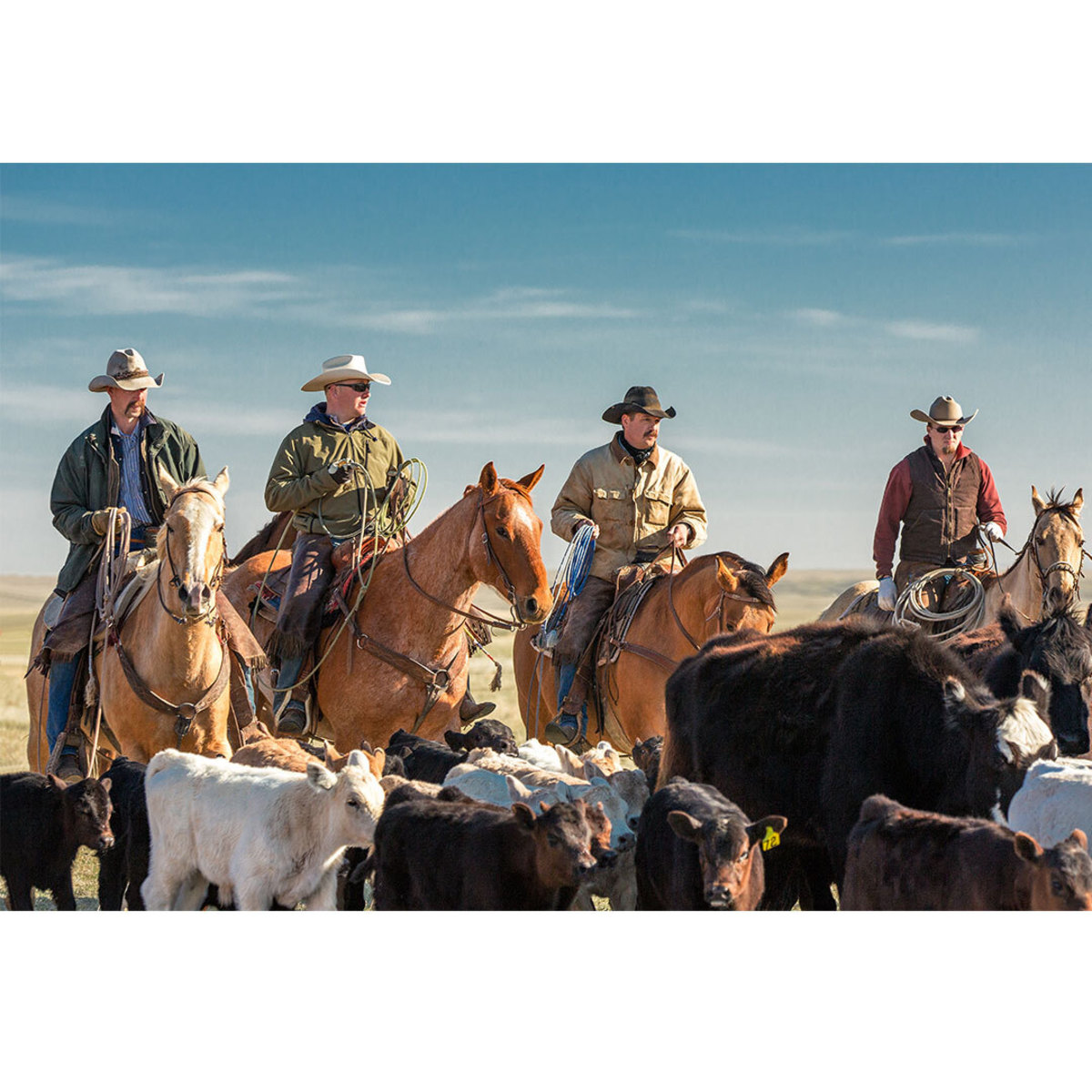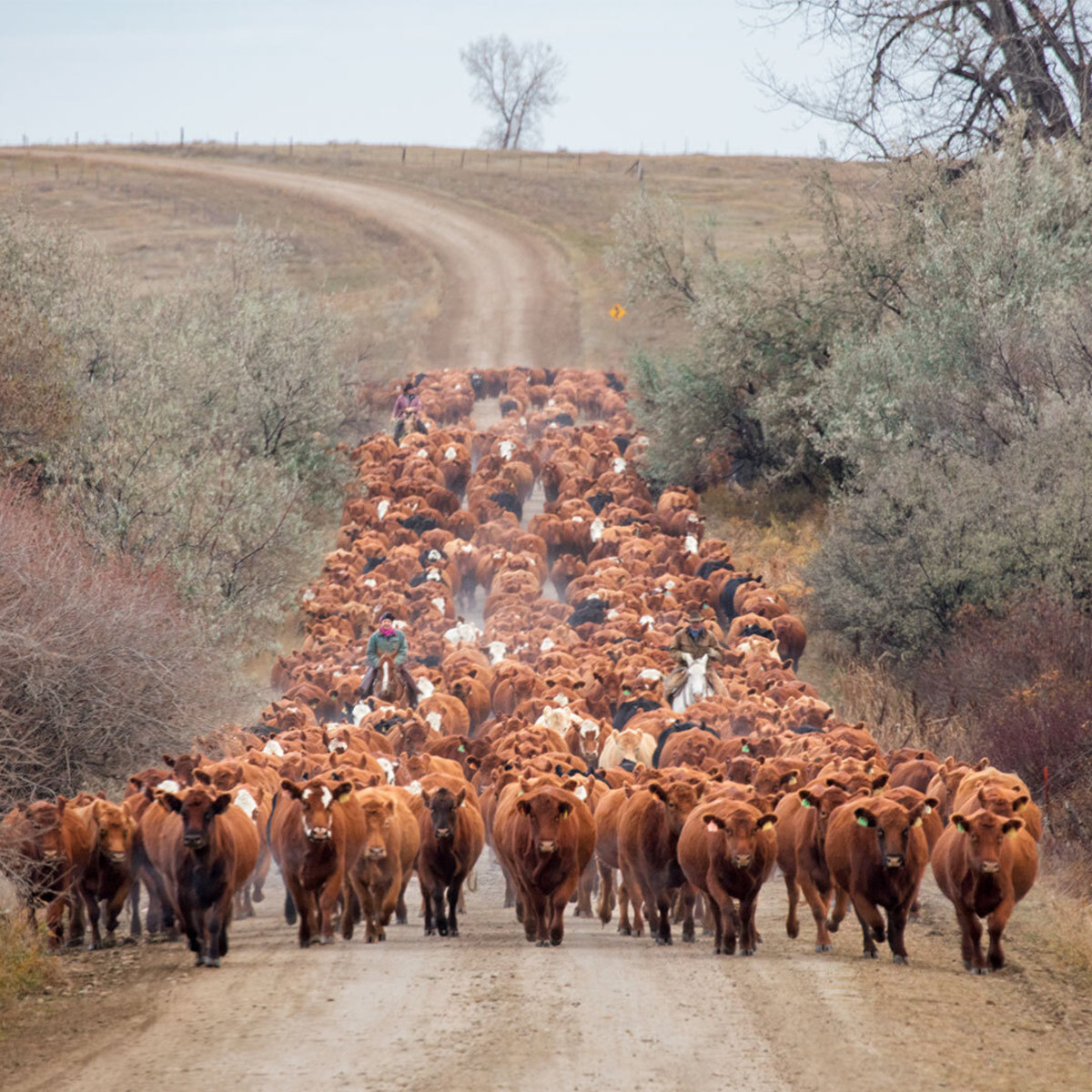A horseshoe’s toss from the Canadian border, the northern lip of Montana is one of the most isolated places in the Lower 48. You have a better chance of crossing paths with a rattlesnake than an automobile. The landscapes are an enormous canvas of natural minimalism. Spin around—all you’ll see is miles of empty land. And sky. And cows.
In fall, ranchers move cattle from seasonal grazing grounds to ranches. Cattle drives are between a few miles and 50 or 60 miles, which can take a week or more to complete. That’s not nearly as many hard yards as their grandfathers and their grandfathers once put in, but today’s cattle drives still cover a lot of ground. Especially when you’re in a stiff leather seat on the back of a quarter horse and exposed to sun, rain, snow and winds that cut like a blade through heavy coats and thermal layers.

Like a flock of starlings in slow motion, cattle move across the oceans of grass, which sway in rhythm to those bitter winds sweeping off the Rocky Mountains. The movement is at once graceful, methodical and coarse. There’s a constant rumble and an aroma you either get used to or learn to love. Men and women drive and tend to the herd while riding horseback. Or sometimes in the seat of an all-terrain vehicle, respectfully referred to in these parts as a “Japanese quarter horse.”
Cattle drives were common in the late 1800s, when millions of cows were driven across America’s open range from Texas to rail heads in places like Kansas and Montana. Those cattle were usually headed for stockyards and processing in Chicago. These days, cows are sold at auction before making the trip in a truck instead of a train to feedlots in places like Iowa and Nebraska. After being finished off with a diet of corn, they’re processed for human consumption near the feedlots. Unless they happen to be grass fed, in which case they might be processed anywhere.

In winter, cows feed on hay, which is cut, rolled and baled in summer. Those bales of hay are kept near the main ranch so it’s easier for ranchers to keep livestock fed in winter. Ranchers also want to keep cows close to home when they give birth, usually January through April. In spring, herds of cows and calves are driven cross-country back to grazing grounds, once again rich with native grasses.
Red River. Lonesome Dove. City Slickers. Popularized in fiction and film, the cattle drive helped transform the cowboy into an American icon. In fall and spring it’s possible to visit places like Blaine and Phillips counties in northern Montana—where these photos were taken—and catch of a glimpse of a cattle drive. It’s a living reminder of a way of life that dominated the West for a flicker of time. And a legacy protected by the kind of men and women they’re making damn few of these days.
from Men's Journal https://ift.tt/MbOqTuz


No comments:
Post a Comment